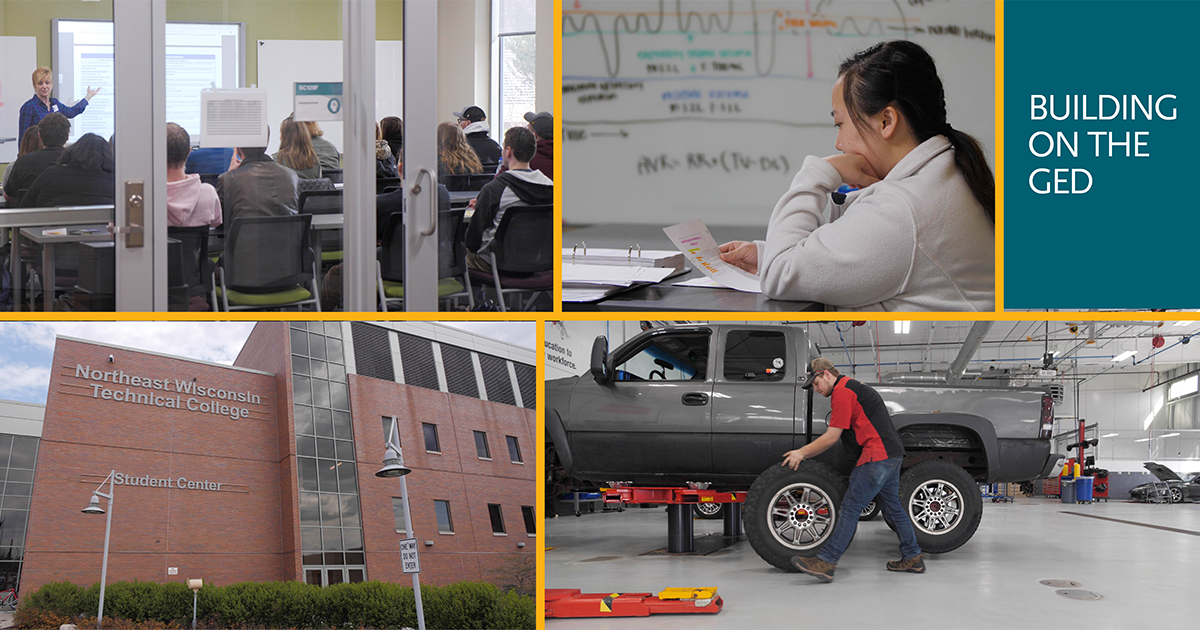GED Bridge: Strengthening the Link into College and Careers

Overview
Some 25 million working-age adults in the United States lack a high school diploma or equivalent, barring them from most colleges and many training programs. When high school dropouts seek to continue their education, it is typically via the General Educational Development (GED) exam, and although a GED certificate is not as helpful in the labor market as a high school diploma, the economic benefits of college are as large for GED holders as for high school graduates. Unfortunately, few GED earners successfully make the transition to college.
GED Bridge: Strengthening the Link into College and Careers, a project at Northeast Wisconsin Technical College (NWTC), aims to test whether a career-focused program called GED Bridge to College and Careers, or GED Bridge for short, can help more GED learners pass the exam and go on to college and a career. It builds on the lessons of the GED Bridge to Health and Business Program (now called Bridge to College and Careers), tested at LaGuardia Community College in New York City, which was found to increase markedly the number of students who passed the GED exam and enrolled in college. NWTC’s program does not replicate the details of LaGuardia’s program, but it does follow similar principles.
Additional Project Details
Agenda, Scope, and Goals
The evaluation will answer two main questions about the program’s effect on GED students:
-
What is the effect of the GED Bridge program on the rate at which students pass the GED exam?
-
What is the effect of the GED Bridge program on college enrollment and persistence?
To help researchers interpret the answers to these two questions, the evaluation will also consider research questions related to the implementation of the program:
-
How is the program implemented?
-
How do the services offered compare with the intended services? (That is, to what degree is there fidelity to the program model?)
- How are the services received by program group students different from the services received by control group students? (That is, to what degree is there a service contrast?)
Design, Sites, and Data Sources
NWTC’s GED Bridge program includes an original curriculum that integrates material from various careers. The program is a 15-week course that provides GED instruction in two seven-week segments, each with a focus on one of four different industry sectors —- health, business, trades, and public safety. Additionally, this course includes a one-week focus on transition activities, centered between the two seven-week segments. Students not only prepare for the GED or a high school equivalency exam but also learn about the types of employment opportunities that exist in each of the industries, helping them make better decisions about their postsecondary education and career options. In addition, GED Bridge students have access to a Transitions Specialist who works with them to plan for postsecondary education and training.
The evaluation will run from the spring semester of 2015 through the spring semester of 2017. It aims to enroll 400 students in all, of whom half will be randomly assigned to GED Bridge and half will be randomly assigned to NWTC’s traditional GED preparation class, GED Prep 2. Follow-up data on participants will be collected through spring 2018.
Data for the study will come from a Baseline Information Form (a short survey on demographic and other background characteristics that students fill out before random assignment), program attendance and completion records, the GED Testing Service (for GED exam results), NWTC’s enrollment database, and the National Student Clearinghouse (for enrollment data on students who attend a different postsecondary institution). MDRC researchers will also visit the college to observe both types of GED classes and interview instructors, case managers, and college officials. Researchers may also conduct focus groups with students in both groups.








